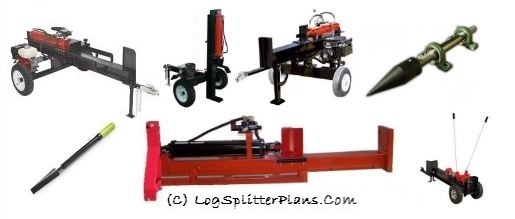Log Splitter Maintenance, Tips and Tricks To Keep it Running and Safe
Log splitters are powerful tools that are designed and build to carry out heavy duty tasks of splitting toughest pieces of logs. Using a log splitter gives you varied benefits out of which the most significant factor is that you get increased log splitting productivity with less efforts and fatigue within a smaller time frame. Not only these tools are appropriate for commercial use but many of the home owners prefer using this tool for splitting wood for their fireplace.
With all the heavy lifting and power, these tools require maintenance in a big way in order to prevent from any disorder and malfunctioning. Regular cleaning and maintenance with a check on any wear and tear keeps your tool in a good working condition.

Tips for Maintenance
Once you have selected one of the best log splitters, it is important to keep a check on regular maintenance in the form of replacements of parts, lubrication etc. Following a maintenance schedule is important for keeping equipment in excellent condition.
Important Instructions for Safe Maintenance:
These powerful tools can give you serious injury if you do not follow safety instructions for operations and during maintenance process. You should be prepared well for carrying out maintenance schedule on your tool and make sure that the log splitter power is turned off. Give this machine some time to cool down before beginning maintenance. Spark plug wire must be disconnected and grounded. Before beginning work, make sure that the pressure of the equipment is completely relieved.
Wear proper safety attire:
Gear up for maintenance process with proper safety attire. You should be wearing gloves, safety glasses and proper boots to keep yourself protected during the process. By wearing proper attire you will be keeping yourself safe from all the dirt, debris and discharge of fluid that may be released during maintenance.
Maintenance of Engine:
Different models and make of log splitters include varied engines and thus their maintenance would differ. Best is to go through instruction manual of your specific splitter and check for engine maintenance tips. The entire schedule will be mentioned in the maintenance section of splitter along with varied requirements of parts, lubricants, fluids etc. Engine’s maintenance differs as each one of them is made by different manufacturers and thus the procedure may have slight differences.
Keeping a check on Hydraulic Fluid:
Every time before you begin to use your log splitter, it is crucial that you should check the level of hydraulic fluid that is stored in the reservoir of your equipment. If the level of this fuel is low, you must make sure to add enough fluid so that your wedge for splitting logs gets sufficient power without straining engine. Specific to your model and make, you must check your instruction manual for replacement of hydraulic fluid. Most of the splitters usually require complete draining and replacement of fluid after usage of 80-100 hours in order to maintain productivity of your tool. But in order to be sure you should check manual.
Apart from the time of replacing fluid, you should also be completely sure of what types and brands are approved for your equipment type. Replacement or re-fueling must be done with those approved types only. If a wrong type or inappropriate quality brand is used, you may find your tool not giving same productivity and performance.
Instruction for Replacement of Hydraulic Fluid:
- Step 1: Disengage the suction hose from the reservoir and drain all the fluid in a separate container for disposal.
- Step 2: Flush the tank and hoses in order to prevent from any damage by contamination.
- Step 3: Refill with the appropriate recommended fluid.
Disposal of drained fluid or oil must be made at recycling centers that are approved.
Check the hydraulic filter:
During maintenance process, it is important to check the hydraulic filter. Any kind of debris and dirt build-up excessively over the filter with use can hinder performance of your equipment. Filter replacement schedule must be checked with instruction manual of your tool and you must strictly follow replacement details.
Clamps and Suction Hose:
Clamp and Return hose connection must be checked every time before beginning to use the tool however the connection with suction hose must be checked occasionally as recommended by manufacturer. Any loose clamps must be tightened for proper working however if you witness any damage, you should arrange for a replacement of the part before using splitter again. Clamps are key convenience features of a log splitter and thus must be taken care of.
If you need to store the equipment for off-season:
Tips: Storage during the season when you will not be using your log splitter needs you to follow simple instructions given below:
- Prime requirement is to check your splitter’s user manual in order to check for instructions mentioned for storage of equipment during off-season. There may be some variations in maintenance with different brands and models.
- In general, you should clean your splitter thoroughly for storage.
- Lightly lubricate it in order to prevent parts from getting rust during storage.
- Make sure that the equipment is stored in a dry clean area and should be kept away from any fertilizer or materials that may cause combustion.
Conclusion
In order to keep your log splitter in excellent condition, it is important to maintain them well. Strictly following regular maintenance schedule will keep your tool in a great shape and will extend its longevity. One of the key parts of maintenance is to have a thorough knowledge of your tool and to know all details mentioned in user-manual. The user-manuals are designed by highly skilled and experienced technicians designing and maintaining this tool and thus following them is a great way of keeping your log splitter as good as new.